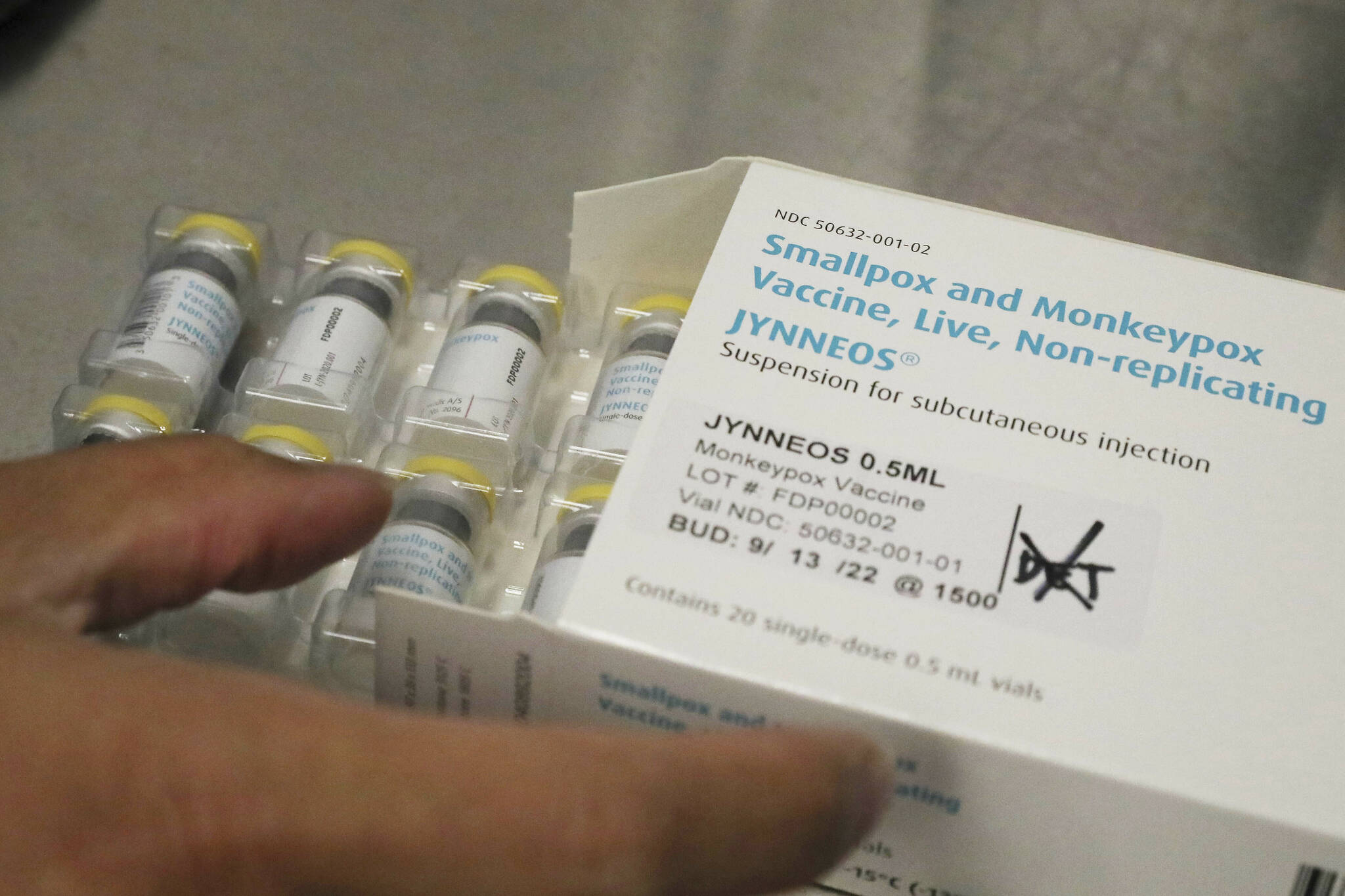The Alaska Department of Health and the Anchorage Health Department announced the state’s first case of monkeypox last Friday. The case was reported in an Anchorage resident who was identified as a close contact of someone who had recently traveled outside of Alaska. The Anchorage case did not require hospitalization, a joint press release from the agencies said.
The Alaska Department of Epidemiology is actively working to identify people who could have been exposed to monkeypox in the state, the agencies said, and any close contacts have been notified and offered a vaccine. Monkeypox testing, as well as a limited supply of the JYNNEOS vaccine, is available in Alaska.
It’s not currently recommended that the general public be vaccinated against monkeypox and vaccines are being prioritized for close contacts of people who have had monkeypox in the last two weeks.
The World Health Organization last week declared the current monkeypox outbreak a public health emergency. As of 5 p.m. on July 28, cases of monkeypox have been reported in 78 countries worldwide, including in 71 countries that have not historically reported monkeypox. That’s per the U.S. Centers for Disease Control and Prevention, which shows just over 4,900 cases reported in the United States across 46 states, Washington, D.C., and Puerto Rico.
Monkeypox, considered a “rare” disease, was first discovered in 1958 among colonies of monkeys kept for research, according to the CDC. It wasn’t until 1970 that the first human case of monkeypox was reported. The virus has historically been reported in multiple central and western African countries, the CDC’s information page says.
The agency likens monkeypox symptoms to those of smallpox, which is in the same family of virus. Monkeypox, the CDC says, is “rarely fatal.”
According to the CDC, monkeypox can spread through close, personal and, often, skin-to-skin contact. That includes direct contact with a monkeypox rash or body fluids from someone with the virus, touching objects or fabrics that have been used by someone with monkeypox and contact with respiratory secretions.
“Direct contact,” the CDC says, can include intimate contact, such as oral, anal or vaginal sex, hugging or kissing, prolonged face-to-face contact or touching things that were used during sex by someone with monkeypox and have not been disinfected. Additionally, monkeypox can be spread by pregnant people to their fetus as well as by infected animals to people they scratch or bite.
Most, but not all, of U.S. cases of the virus, the Alaska Department of Health and the Anchorage Health Department said Friday, have occurred among men who have sex with other men. Anyone, the CDC emphasized, can contract monkeypox, regardless of gender identity or sexual orientation. The virus is not exclusively spread through sexual contact.
Per the CDC, symptoms of the monkeypox virus can include fever, headache, muscle aches, swollen lymph nodes, chills, exhaustion and respiratory symptoms. Also associated with the monkeypox virus is a rash, which can look like pimples or blisters and may be painful or itchy, located on or near the genitals or anus. A rash may also appear on other body parts and will go through several stages, including scabs, before healing, according to the CDC.
Monkeypox illness typically lasts between two and four weeks, with symptoms usually starting within three weeks of exposure to the virus. Most people with monkeypox will develop a rash, the CDC says.
People with close contact exposure to monkeypox, the Alaska Department of Health and the Anchorage Health Department said Friday, are “generally advised” to reach out to a clinician or public health center for evaluation. Close contacts and people living with someone infected with monkeypox should wear a face mask, limit skin-to-skin contact and wash their hands frequently with soap and water.
“The best thing folks can do if they’re experiencing monkeypox symptoms or come across a new, unexplained rash is to stay home and contact their health provider right away,” Anchorage Health Department Medical Officer Dr. Brian Plitz said in a Friday press release.
More information about the monkeypox virus can be found on the CDC’s website at cdc.gov/poxvirus/monkeypox. Additional information about monkeypox in Alaska can be found on the Department of Health’s website at health.alaska.gov/dph/Epi/id/Pages/Monkeypox.aspx.
Reach reporter Ashlyn O’Hara at ashlyn.ohara@peninsulaclarion.com.


